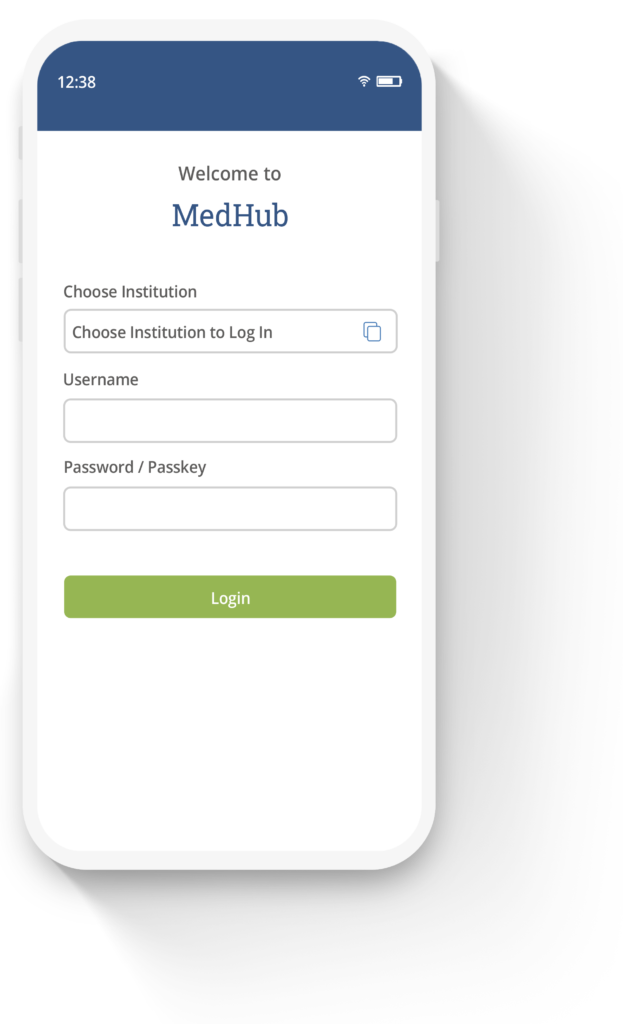
Between managing accreditation activities and evolving compliance requirements, coordinating busy individuals in a variety of roles and locations, and guiding program improvement, managing an Undergraduate Medical Education (UME) program and student population is no small feat.
In today’s age of financial constraints, faculty shortages, and staff turnover, leaders must take advantage of process efficiency opportunities whenever possible – especially when they promise to reduce the administrative burden.
Researching and evaluating potential vendors or solutions can be overwhelming. The resources required to implement, learn, and roll out educational technology solutions may seem astronomical. That’s why it’s important to understand not only the functionality and outcomes of a software platform, but also how your partner will provide the support and guidance required to ensure your institution’s long-term success.
Former UME Administrator recaps criteria for choosing the best-suited partner to support your administration
Our UME expert has put together a simple list of evaluation criteria to reference as you identify the best-suited Undergraduate Medical Education partner for your institution. Explore why the following criteria matter in the blog post below:
- Mobile app and accessibility
- Integrated capabilities vs. a patchwork of systems
- Implementation processes and support customized to specific institutions
- Intuitive and easy-to-use curriculum mapping
- Time saving opportunities for repeat or cyclical processes
- Industry collaboration and learning
1. Is there a mobile app? Is the software accessible on-the-go?
The reality of delivering top-notch education means your team is pulled in many directions. It’s critical for evaluation tasks, feedback, and data to be readily accessible. A strong mobile solution can improve your institution’s efficiency and reporting effectiveness by saving time and offering opportunities for timely reporting and feedback.
Through medical education mobile app solutions, students, trainees, and faculty can provide and receive immediate formative and summative feedback. Consider the features that will help your institution leverage this tool for success, and ask:
- Can students, trainees, and faculty easily complete evaluations and log cases and procedures?
- Will I be able to view live changes to the educational calendar?
- Does talk-to-text functionality exist for in-the-moment updates?
2. Is it a one-stop-shop education management solution? Or will I have to log into a patchwork of systems?
Collaboration is imperative to empower the next generation of healthcare professionals. We must all share best practices, the latest research initiatives, and tools to develop competent student doctors. Resourcing Undergraduate Medical Education partners who overcome competition with integration and partnership will advance healthcare further and faster for everyone.
In a field that is constantly growing and changing, you need a one-stop, integrated solution that evolves to make your life easier. Busy institution leaders no longer have time to learn and use a patchwork of disconnected systems. This is why it’s critical to choose a partner with a demonstrated record of collaboration with other industry-leading vendors to provide you with best-in-class functionality through easy-to-use integrations.
For example, with MedHub, you can save time in data consolidation through valuable functionality from partners including:
- ResQ for UME to automatically sync work hours
- myTIPreport to integrate real-time feedback on milestones and procedures
- BoardVitals to facilitate exam prep and CME credit completion
- QGenda to optimize capacity with workforce management
Your institution’s needs may require additional considerations for optimal centralization. If your program needs a configurable solution, ensure a robust Application Programming Interface (API) exists, which can provide access to your program data and the ability to build custom integrations with other systems like ExamSoft, Banner, PeopleSoft, Canvas, and more.
In addition to data integrations, ask your potential medical education partners about data protection and security. With increasing necessity for heightened data security practices, ensure you have a partner that is diligent with best practices and that remains ahead of new and continuous security threats.
3. What support or guidance will be provided throughout onboarding?
The investment in technology to operationalize curriculum management, sustain accreditation and compliance, and address other critical tasks should be more than a transaction; it should be a partnership.
Look for a solutions provider that will guide and support your team throughout the entire journey – from discovery through implementation and beyond.
Flatten the Implementation Learning Curve
Implementing a new system involves a learning curve, which may initially cloud the long-term value and efficiencies of the solution. It’s important to understand the level of support and guidance your team will receive throughout this process, prior to making your decision.
A dedicated implementation team provided by your Undergraduate Medical Education partner can flatten the learning curve and reduce configuration and onboarding time for your team. Choose an all-in-one solution backed by experts that develop an in-depth understanding of your unique infrastructure and goals to ensure your new software can begin reducing administrative burden for your team faster.
At MedHub we know that a software platform is exponentially more valuable when its users feel confident in their skills. That’s why we provide a dedicated implementation team and a consultant with experience in program leadership, accreditation and compliance, curriculum management, and performance and assessment. These partners all play a significant role in our implementation process, which is proven to help clients get up-to-speed more efficiently. This process positions you for success by adapting to your institution’s specific outcomes, objectives, and expectations.
Expert Client Support
Following the deployment of your new system, you need a partner that stays committed to your success through a shared understanding of your infrastructure, accrediting bodies, and the system as a whole. Having direct access to a support team is invaluable, because there is no one-size-fits-all approach to navigating technology. It’s essential to evaluate the reliability, response times, and current customer satisfaction rates of each potential Undergraduate Medical Education partner.
While the thought of changing systems can seem daunting, the right partner will quickly transform it into an opportunity for long-term efficiencies and improvement.
4. How straightforward and clear are the curriculum mapping and tracking tools?
Selecting a software platform that supports your senior leadership and faculty as they plan, track, and improve student education and experiences can significantly reduce administrative burden. For your team to optimize their time, it’s critical to leverage a solution that helps you develop and drive the data needed to easily create individualized plans and recommendations for student success, while providing clean data outputs and nimble analytics.
Curriculum Mapping/Inventory Management Tool
A best-in-class curriculum mapping tool provides essential visibility into institutional objectives, course and clerkship objectives, and session/event-level objectives. With the ability to easily view objectives, you can facilitate quality improvement initiatives by identifying gaps and redundancies in your curriculum.
Additional functionality to ask about includes:
- How is the curriculum structured within the tool? Is it hierarchical?
- Are there cross-linking capabilities from higher-level objectives down to granular, session-level objectives?
- Can I easily search keywords within the curriculum mapping tool?
- Is there an export feature that is compliant to an upload to the Association of American Medical Colleges (AAMC) Curriculum Inventory (CI) program? Is the vendor I’m considering AAMC CI certified to provide optimal support?
Competency-Based Medical Education and Entrustable Professional Activities (EPAs)
Evaluations are an essential component of any UME institution. Evaluations should be rooted in detailed, evidence-based data to support tracking student progress in comparison to their peers.
Consider prioritizing the ability to link your evaluations to EPAs, milestones, and customized institutional outcomes. A strong solution will provide you with this critical data to support the UME to GME transition while simplifying the assessment process.
5. Will I save time managing annually recurring processes?
Each year brings the excitement of a new cohort, combined with the necessary time commitment of training new faculty, staff, and students. This is where easily-accessible, on-demand training can save valuable time and ensure you start each year with maximum potential.
In addition to training, a partner offering UME consultants with real proven experience in institutional leadership accreditation/compliance, and curriculum management can help your team excel. Look to the UME consultant to identify opportunities for optimizing your experience on an ongoing basis.
Combining training and industry-leading consulting expertise ensures that Undergraduate Medical Education institutions that partner with MedHub receive maximum benefit from their investment.
6. Can I collaborate with peers from other UME institutions or schools?
Working with a partner that goes above and beyond to provide opportunities to connect with both peers outside your institution as well as national influencers is invaluable toward elevating healthcare education. Having the ability to learn from programs across the country and lead with thought leadership maximizes your institution’s potential for life-long academic partnerships.
On a practical level, the opportunity to share evaluation templates will save you time by providing the option to reference (or even copy!) evaluation forms from participating institutions. This eliminates the need to create evaluations from scratch while allowing you to adapt best practices that have proven successful in other programs.
Another benefit to working with a community-centered Undergraduate Medical Education partner is the opportunity to work together to address industry challenges and operational questions. Networking opportunities such as the MedHub User Conference, UME community groups, and discussion forums continue to build and strengthen meaningful relationships across the field.
The 10-Second Summary
Your institution is unique, just like the students and communities you serve. You want an effective solution and a committed Undergraduate Medical Education partner that evolves to stay abreast of industry challenges, opportunities, and accreditation requirements.
Remember when researching and evaluating options, you are not looking for a quick fix – you want value for long-term success. The true value of an educational partnership lies not in only the software solution itself, but in how the full solution empowers your program to excel.
How does MedHub stack up?
Want to read how MedHub stacks up against the six considerations for choosing an Undergraduate Medical Education partner?
